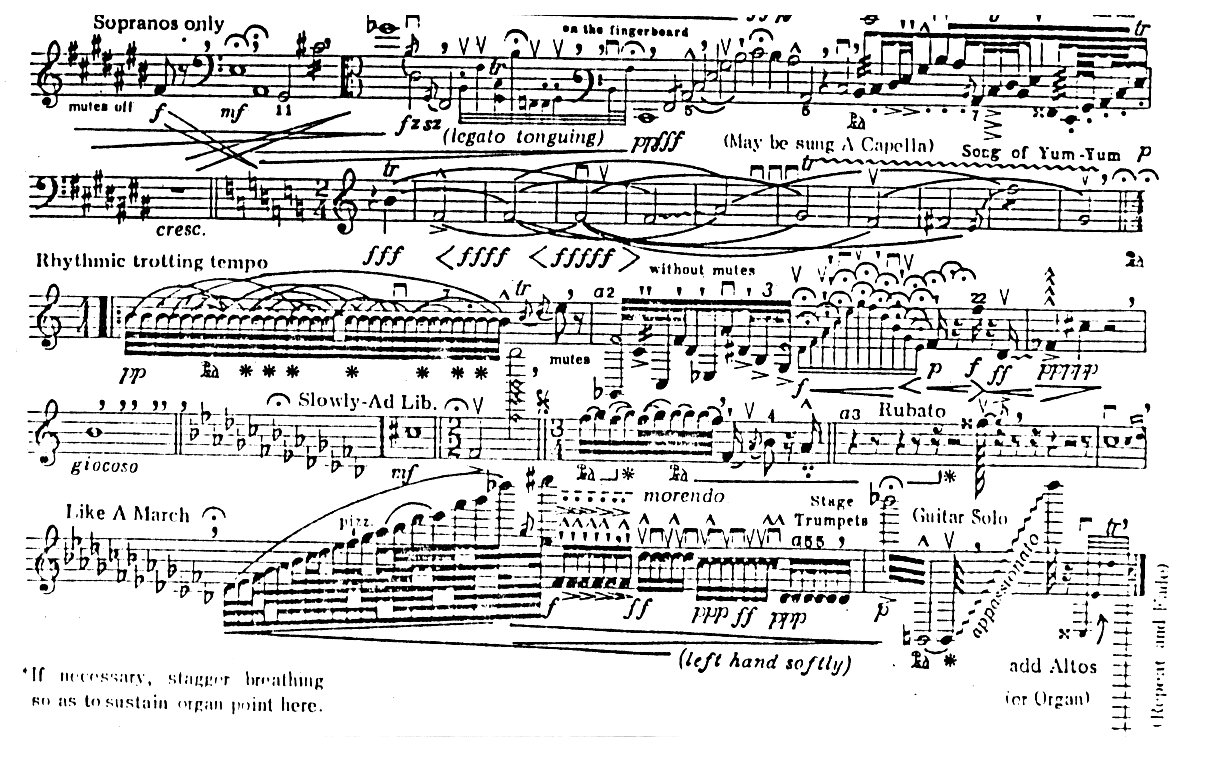| Original Text | English Translation |
| Duo seraphim clamabant,
alter ad alterum: Sanctus, Sanctus, Sanctus, Dominus Deus Sabaoth. Plena est omnis terra gloria ejus. Tres sunt qui testimonium dant in coelo. Pater, Verbum, et Spiritus Sanctus et hic tres unum sunt. Laus et perennis gloria Deo Patri cum Filio, sancto simul Paraclito in sempiterna secula. | The two Seraphim proclaimed,
one to the other: Holy, Holy, Holy, Lord God of Hosts. The whole earth is full of his glory. There are three who give testimony in heaven: the Father, the Word, and the Holy Spirit; and these three are one. Praise and continuing glory be to God the Father and the Son and the Holy Spirit now and forevermore |
Friday, August 26, 2011
A Comparison of Duo Seraphim Treatments
Monday, August 15, 2011
Back to College Life
 So much going on in life right now, I thought it'd be appropriate to blog about my adventures in Colorado. Whether or not anyone cares enough to actually read my upcoming blog posts matters not. If nothing else, this will serve as a good journal for me.
So much going on in life right now, I thought it'd be appropriate to blog about my adventures in Colorado. Whether or not anyone cares enough to actually read my upcoming blog posts matters not. If nothing else, this will serve as a good journal for me.- I attended Harmony University for my first time
- My Grandma died and I attended her funeral
- My wife and daughters were in a bad car accident
- I moved to Colorado from Nevada
- I am starting back into school after seven years
 Today I started my preliminary exams in Aural Theory, Written Theory, and Tonal Analysis. This afternoon I take Post-Tonal Analysis, and Counterpoint. Sound fun? Yeah, I'm pretty worried about some of these. I felt okay about this morning's exams but they are hard! I've spoken to some other graduate students and they have put my mind at ease a bit. They assure me it's not all that big a deal to fail the exams. Some of the material is hard because I was never taught the information in my undergraduate work. Other stuff is hard because I simply don't remember.
Today I started my preliminary exams in Aural Theory, Written Theory, and Tonal Analysis. This afternoon I take Post-Tonal Analysis, and Counterpoint. Sound fun? Yeah, I'm pretty worried about some of these. I felt okay about this morning's exams but they are hard! I've spoken to some other graduate students and they have put my mind at ease a bit. They assure me it's not all that big a deal to fail the exams. Some of the material is hard because I was never taught the information in my undergraduate work. Other stuff is hard because I simply don't remember.
Saturday, May 07, 2011
The Absurdity of the Win-loss Stat in Baseball
 Today’s headline on the sfgiants.com homepage said, “Bumgarner Seeks His First Win.” Sports announcers talk about his current 0-5 record as sad and disappointing. There is no doubt that it is disappointing that the Giants have not been able to win under his watch, but in no way does his 0-5 record prove that he is pitching poorly. I propose that the wins and losses stat in baseball is quite possibly the worst stat that is widely accepted by the baseball community.
Today’s headline on the sfgiants.com homepage said, “Bumgarner Seeks His First Win.” Sports announcers talk about his current 0-5 record as sad and disappointing. There is no doubt that it is disappointing that the Giants have not been able to win under his watch, but in no way does his 0-5 record prove that he is pitching poorly. I propose that the wins and losses stat in baseball is quite possibly the worst stat that is widely accepted by the baseball community.There is far too much importance and noteworthiness given to this statistic. Pitchers are graded by this record more than any other redeeming (or non-redeeming) achievement they may have made. When a new pitcher comes onto the mound, this is the stat they flash at us. When a “struggling” Ubaldo Jimenez goes 0-2 in his first five starts, he is considered to be in a funk.
Personally, I believe that this statistic has almost nothing to do with how good a pitcher really is and baseball fans and sports announcers should stopy analyzing it as the end-all measurement of a pitchers effectiveness.
A nearly perfect pitcher can get slapped with a loss. Let’s analyze this scenario: Johnny “The Missle” Fastballer pitches 8 perfect innings. So far a no-hitter, a perfect game even. But the score remains 0-0 because his opponent (Jimmy “Knuckles” Speedster) has given up only 3 hits and no earned runs. Because of his perfect game, Johnny Fastballer’s manager leaves him in the game. It’s the bottom of the 9th and Fastballer throws a 96 mph fastball down the middle. Sammy Slammer knocks it out of the park. A walk-off homerun. The game ends. Fastballer takes the loss.
In this example, arguably an extreme case, Johnny Fastballer pitches one of the best games in baseball history but is credited with the loss. Ouch. This scenario, of course, could be played out in many different ways. It’s still early in the season as of this posting (mid-May) and already I’ve seen many amazing games pitched only to go sour in one or two at-bats.
I’ve seen pitchers go 5, 6, and 7 innings, pitching beautifully, only to give up a run or two before being pulled. And he gets the loss. The problem here is that nobody ever seems to recognize the fact that these pitchers pitched superbly! All they focus on is that pesky win-loss record.
In my example above, Johnny Fastballer pitched a nearly perfect game, and ended with an ERA of 1.0 and a WHIP of 0.11. And he probably also had about 12 K’s. ….and the loss!
A win credited to a pitcher is probably more of an accurate scoring mechanism than is a loss. If his team wins, it’s because the pitcher was able to hold off the opponent while his own team worked out their offense. Still, it’s not a perfect system.
Take for example a pitcher that gives up 6 runs in 6 innings. And ERA of 9.0. Terrible by any standard. It just so happens that his own team’s offense scores 7 runs during their at bats. This pitcher gets the win while boasting a 9.0 ERA. If he does this consistently, depending on his teamate’s bats, he goes 5-0 in the first 4 weeks of the season. Is he a good pitcher then? NO! His ERA is terrible, his WHIP is terrible, and his K:9 ratio is in the gutter.
Last night, the Giants and Rockies were tied at 3-3 in the 9th inning. Top of the 9th, Bochy puts Brian Wilson (the closer) on the mound. Three up three down. On to the bottom of the 9th. A walk-off base-hit wins the game for the G-men. Brian Wilson is credited with the win. Um, WhAt!?! Good for beard-man for his one inning pitched. But HE gets the win?? What did his three outs have to do with the Giant’s offense coming to life in the bottom of the 9th?
This is absurd. Multiply this by half a season and Wilson now has a closing record of 5 wins he doesn’t deserve and Fastballer goes 0-12 while pitching nearly perfect games in every outing.
If you want to see how good a pitcher really is, look at his innings pitched, his ERA, his WHIP, his strikeouts:innings pitched (K:9) ratio. These are the things we should be looking at. Everyone feels bad for Ubaldo Jimenez and Madison Bumgarner, but have you looked at their other stats (arguably they’re not great, but that’s beside the point)?
Tim Stauffer has pitched 41 innings to date and has zero wins, but he maintains an era of 2.61 and a WHIP of 1.16. In other words, the guy is dang good! But his win-loss record stands at 0-1. Josh Danks, same story: He’s 0-5 with 47 innings pitched and a 3.83 ERA. Sure the ERA could be lower. He doesn’t have 5 losses for nothing. But a 3.83 ERA for a regular starter isn’t terrible. Also, I can give you at least three pitchers that have 4 wins and a 4.20+ ERA. Case in point: the win-loss stat does not give us an accurate picture of the quality of a pitcher.
Play ball!
